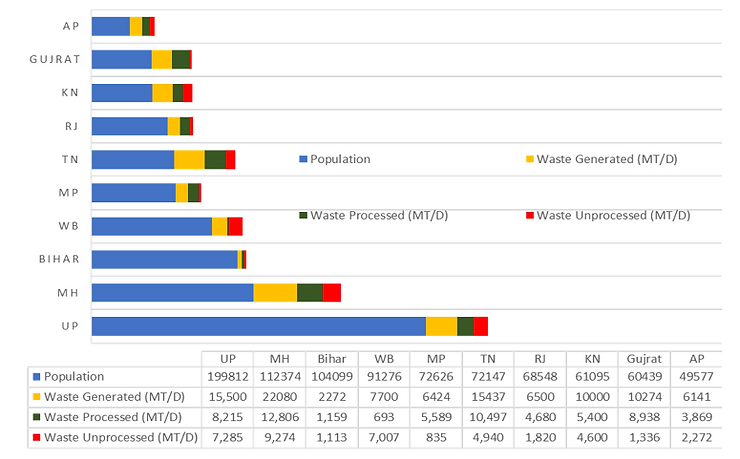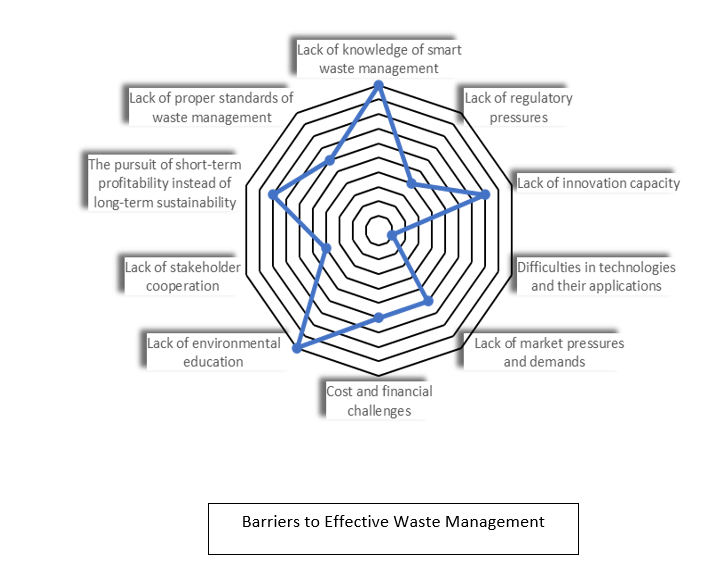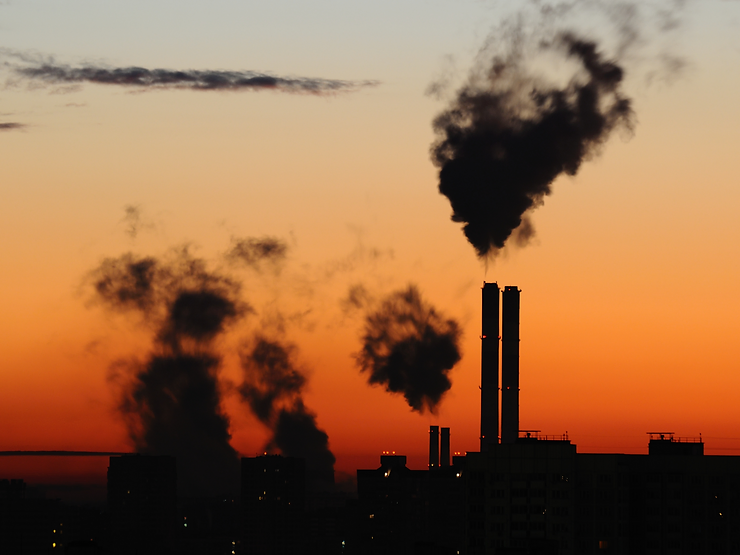As of 2020, Government of India data indicates that on a daily average close to 1 Lakh 40 thousand and some change tonnes of solid waste are produced from the domestic sector. Out of which 60% of the waste are processed leaving behind close to 44,000 tonnes of unprocessed waste daily. That monthly mountain is close to 13 Lakh 47 thousand tonnes of unprocessed waste and in a year summits to close to a whopping 1 crore 62 lakh and 66 thousand tonnes of unprocessed waste. Unfortunately, this entire burden of waste finds refuge in landfills and on the government’s mind in form of a serious headache.
To put things into close perspective, 1 lorry/truck of standard size in India can hold close to 4 tonnes of solid waste. By this horror, close to 40 Lakh 41 thousand lorry/trucks standstill with the unprocessed waste throughout the year. An enormous amount of pressure, therefore, is being exerted onto landfills and it is regretful to imagine that India is completely ignoring the vast potential of unutilized energy feedstock sitting idle in the laps of the landfills.

Waste left unattended beyond capacity has a catastrophic implication on a city often converting into an epicenter of disease and bacteria outbreaks, not to mention the unpleasant sight and stench. It is estimated that India will generate close to 11 Lakh tonnes of waste every day by 205 . At this increasing and alarming pace, it is not anymore, a piece of advice that the government and the public have an impeding requirement to think and design appropriate methods to implement waste management solutions city-wise. Even more when the center has curated ambitious and resilient plans of smart cities in India. Swift focus is of immediate importance for the center to re-calibrate their efforts in the 100 designated smart cities.
Now the question that rests, what is the future solution? The answer finds its nest in the common theme embodying many mega-scale industries. Smart adoption of technologies- AI, Digitalization, Internet of Things are some of the common and well-proven technologies that countries across the globe are integrating into their waste lifecycle model to walk through the roadmap of “Zero Waste”. The stakeholders are not only the government but citizens as well. The waste solution lies in the heart of citizens’ behaviour, product designers, producers, and policymakers. Waste Management is critical in today’s day and age to keep resources circulating. Public-Private partnership is the core of the blend for India to measure its tactical response against a piling concern such as waste.

2021 fortunately has remotely diluted a barrier for the government as citizens have undergone a crash course on Environmental education. Citizen over the course of the pandemic has never been as cognizant in then past with the importance of effective waste management. Disposing PPE’s have somehow introduced a general norm practice of segregation which was earlier not taking precedence. This is likely the golden time for the government to pour gasoline on the waste management model/initiatives and capitalize on scale. This therefore brings a relief to notice the allocation of Rs 1.41 lakh to the Urban Swachh Bharat Mission over the period of 2021-2026. The allocation does however, segregate the allocation on to sludge management, wastewater treatments, segregation of single use plastics and reduction in air pollution. This indeed is a move in the positive and optimistic sustainable future for India.

As earlier mentioned in this article, policy makers play the herculean task in the entire “Innovating to Zero” megatrend. One of the key areas the government needs to lay out an extra safety net is the tendering process and have a clear vision and understanding of manpower. India being diverse in its terrain and citizens needs a robust and diverse strategy in understanding and obtaining efficiency. The primitive variable of it is manpower utilization and fund being well distributed in training, educating and providing additional benefits for the resource.
A strong motivation needs to be showered by the government advocating for innovation in technology and create funding ecosystems for companies looking forward to invest in the clean technology space. India is in it’s prime as IT superpowers needs to leverage it’s core capability in digitization and adopting Internet of Things to the core of it’s waste management model. Technologies such as smart composting, smart bins, smart garbage collection and segregation are the route to attain it’s sustainability goals. Another prime importance for the government to look in is to construct a dedicated task force for survey and data collection in order to close the loop.
A digital future remains the solitary method of a clean and greener India- waste free

